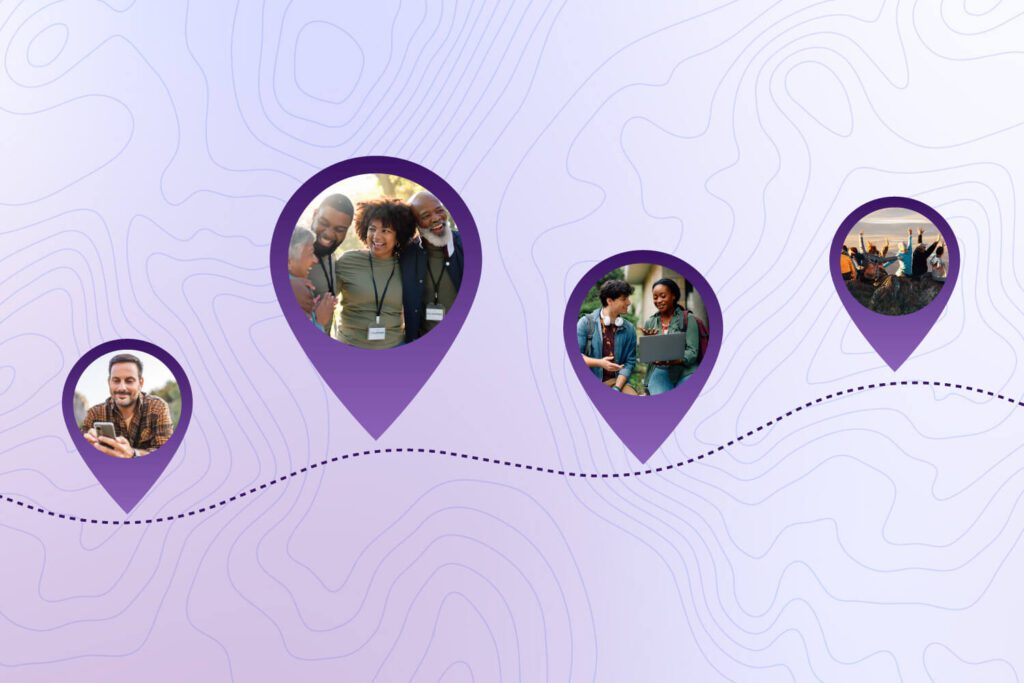An email series is a set of pre-written emails that are sent to a supporter after that supporter takes a specific action. It is also called a drip campaign, email workflow, or branching email campaign. Implementing different types of email series can increase supporter engagement and raise more money, and will help optimize your nonprofit organization’s email marketing program.
This guide will cover six different types of email series to set up for your nonprofit. Let’s begin!
1. Welcome series
A welcome series goes to all new supporters who subscribe to your email list. It usually takes the form of 2-4 emails that welcome new supporters, introduce them to your nonprofit’s purpose, and set them on the path to becoming fully engaged members of your community. Here are a few ways you can level up your welcome series:- Create different welcome series based on the channel where your supporter found you. For example, if they provided their email address through a specific petition or issue page, include content specific to the cause they care about.
- Set up A/B tests to optimize the performance of individual messages in your series. For example, you could try different subject lines to see which one performs better.
- Time your messages strategically. Test different lag times between the time a supporter subscribes and the first email they get to determine which time frame results in the highest open and clickthrough rates.
2. Reengagement series
A top priority for nonprofit organizations is keeping supporters engaged. The reengagement series can help convince supporters that haven’t interacted with your nonprofit recently to come back to the fold. Usually 2-3 emails, this series is sent to anyone who hasn’t opened an email or engaged with your organization in any other way in the past 6 months. They are aimed at getting your inactive subscribers to demonstrate that they still want to hear from you. If they don’t engage, it’s time to remove them from your email list. Here are a few things to consider when implementing a reengagement series:- Test different reengagement emails to see which series performs best.
- Try setting a deadline for action.
- Show supporters you value them by personalizing the email with their name and using language like “We miss you!”
- Be upfront and honest in your emails.
3. Recurring donor upgrade series
This multi-email series is sent to donors who have reached the 12-month anniversary of their recurring donations. Usually, the emails thank them for their support, celebrate their anniversary with you, and ask them to increase their gift slightly. Here are a few things to try in your recurring donor upgrade series:- Test different messages, issues, and ideas to see what performs best in generating upgrades
- Apply donor segmentation strategies by targeting recurring donors with issues relevant to them
4. One-time donor upsell series
This email series consists of multiple emails thanking new donors for their support and presents your first opportunity to ask for a monthly contribution. It’s sent to donors that have recently made a one-time contribution to your organization. There are a few ways you can improve this email series to encourage monthly donations:- Try different delay durations between the donation and the upsell email
- Experiment with different suggested recurring amounts based on the donor’s past donation amount
- Try asking for less upfront in return for more over time
5. Donor payment update series
With the rise in popularity of automated payment services, many people forget to update their credit card information if they lose their card or receive a new one. This series ensures your donation doesn’t get delayed any longer than necessary. The donor payment update series is a multi-email series thanking donors for their ongoing support and asking them to provide updated payment information so that their contributions to your organization can continue to make an impact. Here are a few considerations for this email series:- Try different messages to see what performs best in getting donors to update their payment details
- Make it easy to update payment details
- Ensure that your payment processor is secure so that donors have no concerns about giving you their private information
6. Missing compliance data series
Anyone doing fundraising for a political action committee (PAC) or other entity knows the importance of filing compliance reports with the regulatory agency that’s relevant for them—and these reports mean you’ll need accurate, complete donor data. A missing compliance data email series can help you contact donors who need to provide additional data for a compliance report, such as their employer or occupation. This email series is usually an automated, multi-email campaign that continues until a donor provides the necessary compliance data. Having this information is crucial—you need it to be able to file your compliance report, and there can be legal ramifications for not following compliance laws. By having automated emails solicit data from your donors, you can save time and effort in following up on this issue. This email series also reduces outreach time and allows donors to respond at their convenience.Achieving more with email automation
Automating some of your email series can be an extremely helpful way for nonprofit organizations to increase their efficiency and make an even bigger impact with their limited staff hours. To make the most of this strategy, your CRM should be robust—it should be able to handle different types of email series and multiple donor segments. Consider working with Bonterra’s solutions to support your email campaigns.
Ready to Get Started?




